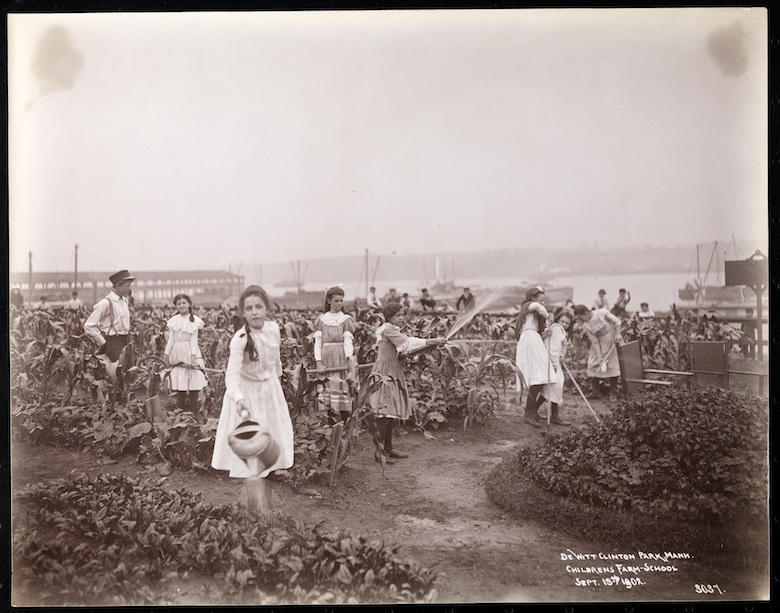
Picture this: A litter-strewn plot in Hell’s Kitchen has been transformed into a children’s garden. Competition for plots is fierce. More than 500 kids tend the likes of lettuce, spinach, cabbage, celery, onions and radishes. Come harvest time, an on-site kitchen teaches the young gardeners how to cook the bounty.
Sound like Alice Waters’ latest initiative? Think again.
The DeWitt Clinton Farm Garden was founded in 1902 by Mrs. Henry Parsons, a mother of seven and firm believer in the value of outdoor education. With the support of city officials and the help of hardworking children, Mrs. Parsons transformed a one-acre garbage dump into 400 fertilized plots open to children of all classes and races.
Kids from tenements and brownstones alike vied to participate and by 1906 the garden expanded to accommodate two planting seasons. City officials and progressive reformers hailed the project as a solution to many of the problems plaguing city slums, where parks and playgrounds were scare. The vocational value of a practical farm education appealed to the large number of immigrant children who dropped out of school—or never attended. And for the poorest New Yorkers, the food could save a family from starvation.
The model of the DeWitt Clinton Farm Garden was so successful that others soon adapted it. John D. Rockefeller founded a children’s farm on the Upper East Side, and by 1908 more than 80 public schools were participating in the city program to create gardens at educational institutions. But increasing urbanization was inexorable and in 1932 the DeWitt Clinton garden made way for construction of the West Side Highway.



